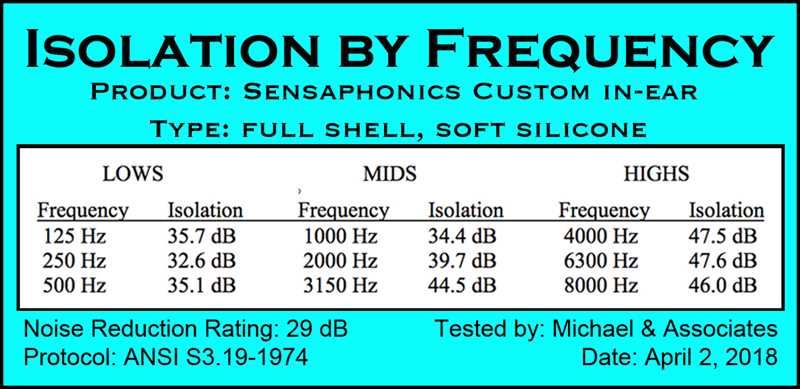Sensaphonics scores high NRR rating
- Details

This scientific measure of broadband isolation was the result of independent testing by independent testing lab Michael & Associates and applies to all Sensaphonics custom IEMs: 3D AARO, 3MAX, 2MAX, 2X-S, and the new D2.
“Our custom products solve real-world problems for musicians and sound engineers, and this 29 dB NRR is proof,” says Sensaphonics president, Dr. Michael Santucci. “That means maximum isolation, which promotes safer monitor levels. But beyond that, soft silicone is far more comfortable and retains its seals for full bass response, allowing performers to focus on their music, not their equipment. So Sensaphonics promotes both hearing health and better performances.”
Michael & Associates tested attenuation on 10 test subjects across nine frequencies, per ANSI standards (S3.19-1974).The rating of 29dB is a conservative estimate of the broadband isolation. Actual attenuation averages were higher, ranging from a low of 32.6 dB at 250 Hz to a high of 47.6 dB at 6300 Hz across three separate tests per subject.
“Sensaphonics is dedicated to hearing wellness through superior product design,” notes Santucci, who also works with the World Health Organisation to promote safe listening globally. “This new NRR rating proves that for maximum isolation, Sensaphonics is the best choice. To hear natural stage ambience without yanking one earpiece out, our 3D AARO is your only choice. To avoid the distraction of losing your seal with hard plastic earpieces, our soft silicone is the best solution, and far more comfortable to boot. Basically, if you care about your hearing, Sensaphonics is, by far, the best choice in custom in-ear monitors.”
Noise Reduction Rating is used to determine a product’s effectiveness as a hearing protection device. The NRR is typically used to evaluate industrial hearing protection (earplugs and earmuffs), but is also able to measure the broadband attenuation of IEMs.
(Jim Evans)










